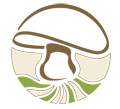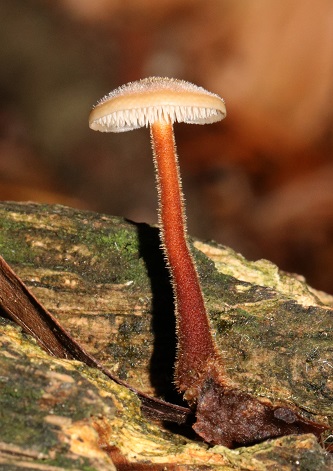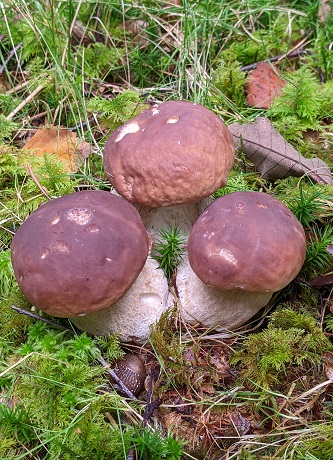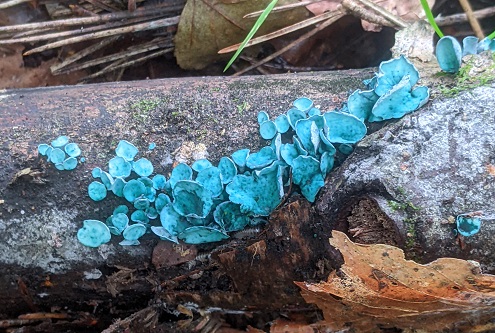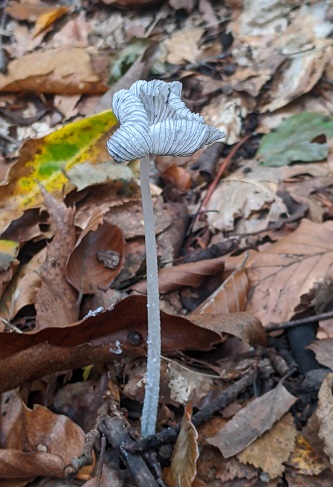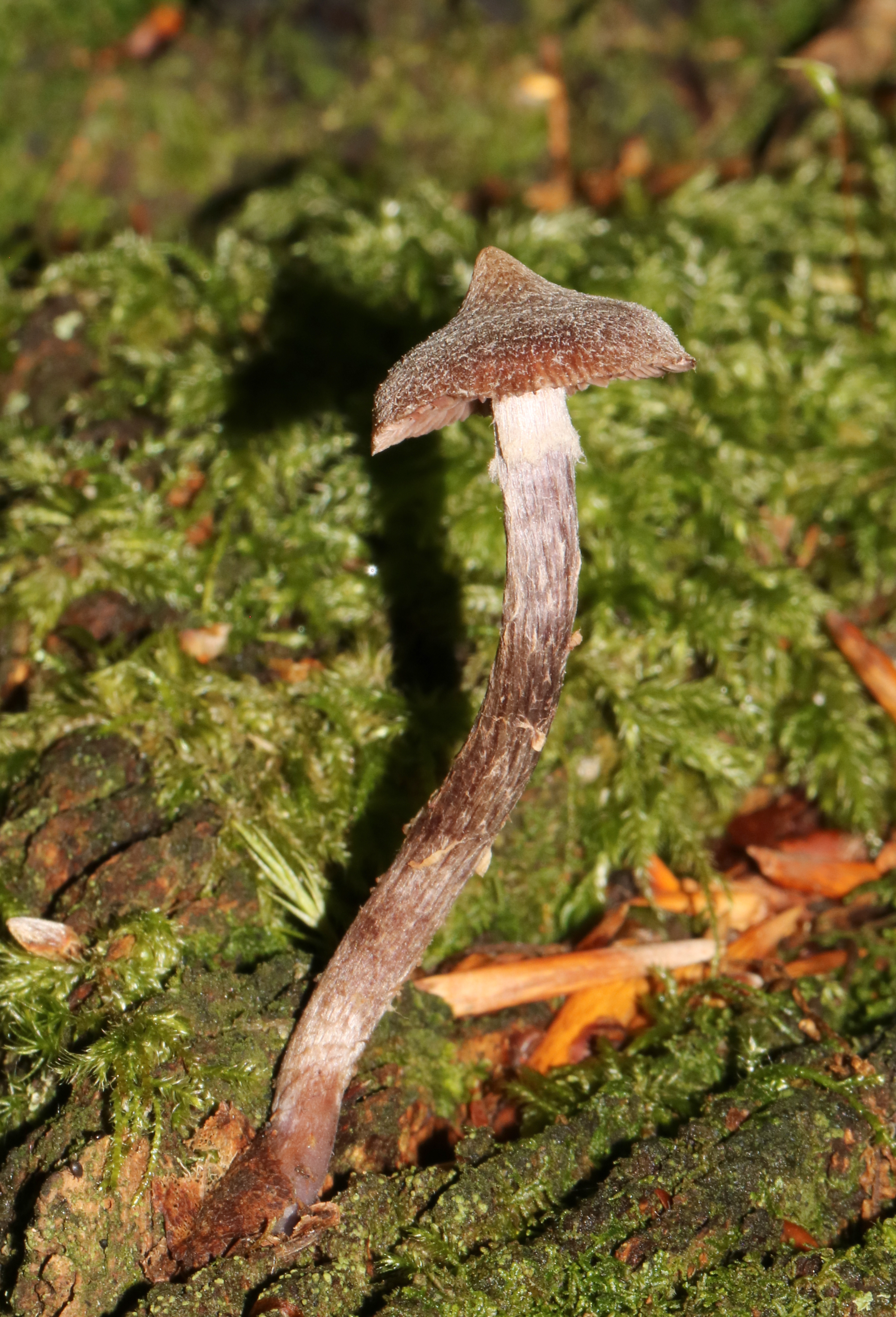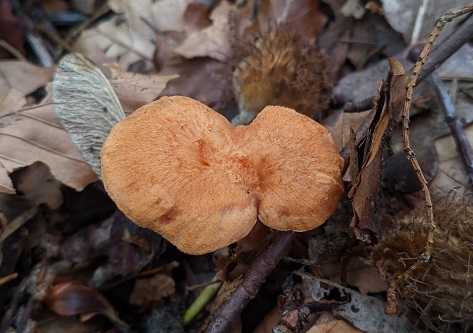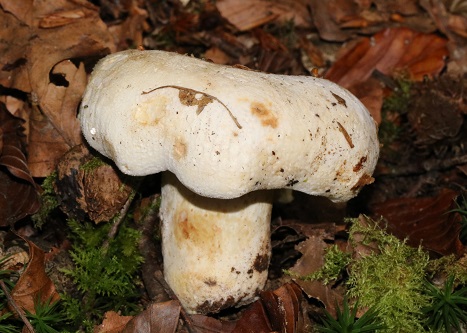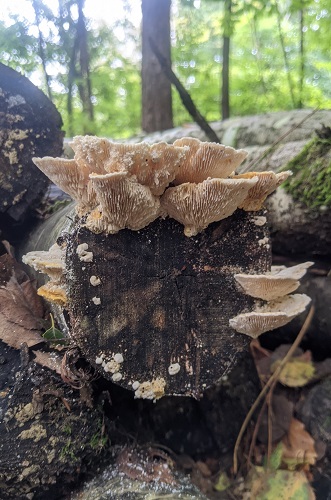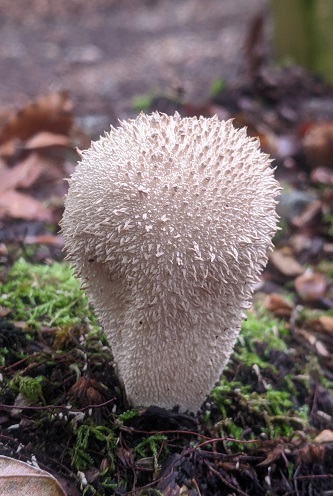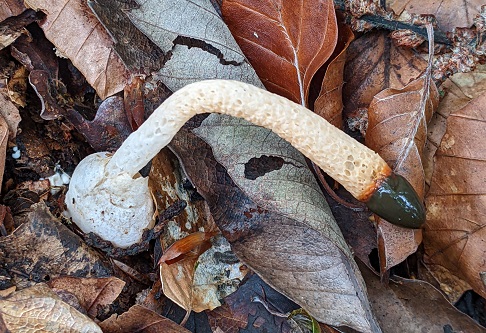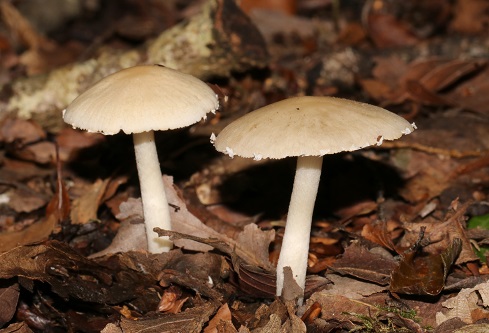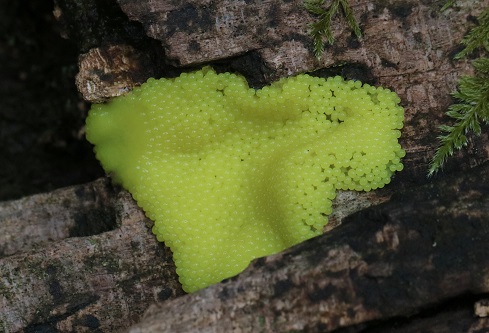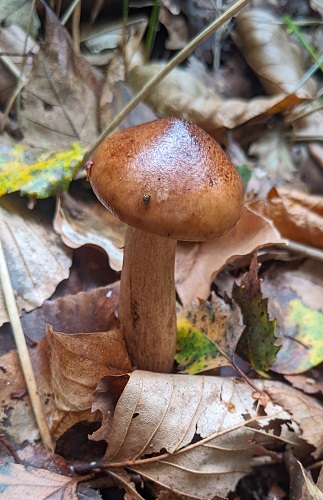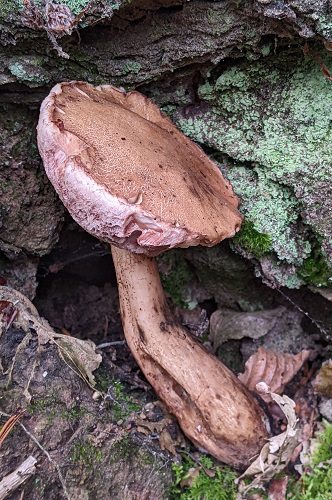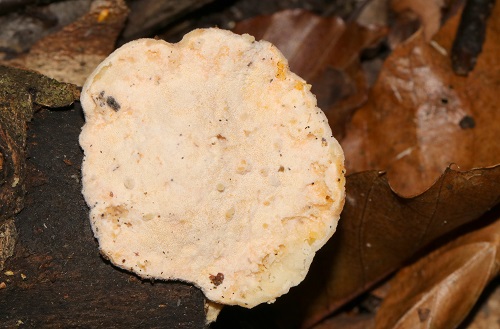Franchises
Sun 1 Oct 2023
Field event ID HF2318
OS Grid areas: SU2316
Report: There was a big turn-out for this meeting on an overcast but warm and humid day. With so many eyes, the finds came thick and fast, so it was difficult to keep track of all the discoveries.
A nice early find, in pine litter, was Auriscalpium vulgare (Ear Pick Fungus) and there was a notable abundance of Boletus edulis (Cep) including some super-sized specimens. On fallen logs of the respective trees, we found Daedalea quercina (Oak Mazegill) and Lenzites betulinus (Birch Mazegill) as well as Tyromyces chioneus (White Cheese Polypore) and Fomitopsis pinicola (Red-belted Bracket).
There was a profusion of the, usually shy-fruiting, Chlorociboria aeruginascens (Green Elfcup) and some fine examples of Lycoperdon excipuliforme (Pestle Puffball), whilst around a stand of birch we recorded Tricholoma fulvum (Birch Knight), Leccinum scabrum (Brown Birch Bolete) and Lactarius tabidus (Birch Milkcap).
Those with a keen sense of smell were able to confirm the identification of the geranium-scented Cortinarius flexipes (Pelargonium Webcap) but even those of us lacking in olfactory skills could not miss the pungent aromas of Phallus impudicus (Stinkhorn) and Scytinostroma portentosum (Mothball Crust).
Both Hydnum repandum (Wood Hedgehog) and H. rufescens (Terracotta Hedgehog) were found and then a single Mutinus caninus (Dog Stinkhorn).
A mature bolete with pink pores and a netted stipe was identified as Tylopilus felleus (Bitter Bolete) and nearby, a more palatable, Chalciporus piperatus (Peppery Bolete) was found and tasted by some.
Some photogenic Psathyrella candolleana (Pale Brittlestem) were fruiting on the middle of the track and the similarly attractive Coprinopsis lagopus (Hare’s Foot Inkcap) and Leotia lubrica (Jellybaby) were seen.
During the break for lunch, the tiny brown cups of Lanzia echinophila (Hairy Nuts Disco) were found on rotting husks of Sweet Chestnut.
On our way back, there was a large specimen of Cortinarius violaceus (Violet Webcap), Lactarius vellereus (Fleecy Milkcap) and an almost luminous, greenish-yellow slime-mould, Stemonitis flavogenita.
Species recorded: Amanita citrina var. citrina, Amanita excelsa var. spissa, Amanita fulva, Amanita rubescens var. rubescens, Auriscalpium vulgare, Boletus chrysenteron, Boletus edulis, Boletus luridiformis var. luridiformis, Boletus pruinatus, Bulgaria inquinans, Calocera viscosa, Cantharellus cibarius, Cantharellus tubaeformis, Ceriporiopsis gilvescens, Chalciporus piperatus, Chlorociboria aeruginascens, Clitopilus hobsonii, Clitopilus prunulus, Coprinellus micaceus, Coprinopsis lagopus, Cortinarius bolaris, Cortinarius flexipes, Cortinarius violaceus, Craterellus sinuosus, Crepidotus cesatii, Crepidotus variabilis, Daedalea quercina, Daedaleopsis confragosa, Fistulina hepatica, Fomitopsis betulina, Fomitopsis pinicola, Galerina marginata, Gymnopus confluens, Gymnopus dryophilus, Gymnopus erythropus, Helvella crispa, Heterobasidion annosum, Hydnum repandum, Hydnum rufescens, Hymenochaete rubiginosa, Hymenoscyphus fructigenus, Inocybe geophylla var. geophylla, Laccaria amethystina, Lacrymaria lacrymabunda, Lactarius camphoratus, Lactarius tabidus, Lactarius vellereus, Lanzia echinophila, Laxitextum bicolor, Leccinum scabrum, Leotia lubrica, Lycoperdon excipuliforme, Lycoperdon perlatum, Megacollybia platyphylla, Mucidula mucida, Mutinus caninus, Mycena arcangeliana, Mycena corynephora, Mycena filopes, Mycena galericulata, Mycena galopus var. galopus, Mycena haematopus, Mycena pelianthina, Mycena stylobates, Mycena tenerrima, Neobulgaria pura var. pura, Panellus stipticus, Paxillus involutus, Phallus impudicus var. impudicus, Phlebia livida s. lat. , Phlebiopsis ravenelii, Physisporinus sanguinolentus, Pleurotus ostreatus, Pluteus cervinus, Polyporus leptocephalus, Polyporus tuberaster, Psathyrella candolleana, Psathyrella piluliformis, Rhodocollybia maculata, Rickenella fibula, Russula atropurpurea, Russula betularum, Russula cyanoxantha, Russula densifolia, Russula risigallina, Russula virescens, Schizopora paradoxa, Scopuloides rimosa, Scytinostroma portentosum, Sidera vulgaris, Simocybe sumptuosa, Stereum gausapatum, Stereum hirsutum, Stereum subtomentosum, Trametes betulina, Trametes gibbosa, Trametes versicolor, Trichaptum abietinum, Tricholoma fulvum, Tubaria conspersa, Tyromyces chioneus, Xylaria polymorpha, Xylodon crustosus
A full species list with further details can be seen at the Fungal Records Database of Britain and Ireland (FRDBI). Please contact us if you need a user ID.
